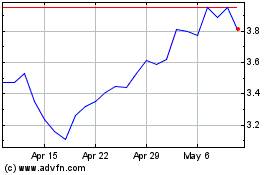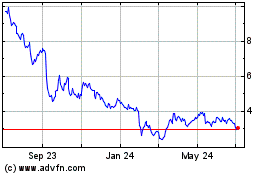Our Back to the Future Economy: Most of Today’s Trends Reminiscent of 1980s and 1990s, IHS Chief Economist Says
January 20 2015 - 3:00AM
Business Wire
BRICS gap widens as developed economies take lead; Oil price
plunge to transfer $1.5 trillion to consumers
With many of today’s economic trends reminiscent of the 1980s
and 1990s, we are looking at a ‘Back to the Future’ scenario for
the global economy says Chief Economist Dr. Nariman Behravesh of
IHS, Inc. (NYSE: IHS), the leading global source of information and
analytics.
“Once again the US is a locomotive of global growth, the dollar
is resurgent and US oil production is set to be the highest in the
world,” he said at the World Economic Forum in Davos,
Switzerland.
Visit the IHS Economics & Country Risk
homepage for more info
Oil Price Plunge and Global Growth
“Everyone right now is talking about the impact of the oil price
plunge,” Behravesh said. “While clear winners and losers are being
created, the net effect will be positive as roughly $1.5 trillion
in wealth is transferred from producers of oil to consumers of it.
This will translate to an additional 0.3 to 0.5 percentage point to
world growth.”
As a point of reference, the 67 percent drop in oil prices in
1985 and 1986 was followed by a global boom. While three decades
later the global environment is different, and a boom may not be in
the offing, the big drop in oil prices will help growth.
“Despite multiple divergent trends, global growth is likely to
accelerate a little in 2015,” he said. “Falling oil prices and more
stimuli from key central banks will boost global growth in 2015 to
3.0 percent from 2.7 percent in 2014.”
BRICS Gap Widens as Developed Economies Take Lead
“The divergence in the performance of the big emerging markets
is getting wider,” Behravesh said. IHS expects the Russian economy
to contract by 4.0 percent this year and the moribund state of the
Brazilian economy to continue.
On the other hand, growth prospects in emerging markets such as
India, Indonesia, Poland and Turkey look bright. India in
particular looks very promising, with growth rates that could
exceed that of China in the next few years.
US growth will remain solid, despite weakness in other parts of
the world and plummeting oil prices. The US economy should be able
to grow by 3 percent in 2015 without too much trouble. “Strong
domestic demand growth will, as it has in the past, provide a
strong foundation and buffer for the US economy,” Behravesh
said.
Eurozone’s Lackluster 1.4 Percent Growth
A Greek exit is a low-probability scenario, which, if it
happens, will not derail the Eurozone recovery. Even if Syriza wins
the upcoming Greek snap election, the probability of Greece leaving
the Eurozone is less than 20 percent.
If such an exit does occur, the contagion effect for the rest of
the Eurozone will be small, given the ECB’s promise to do “whatever
it takes” to prevent a financial meltdown.
Nevertheless, Eurozone growth in 2015 will only be a lackluster
1.4 percent.
About IHS
(www.ihs.com)
IHS (NYSE: IHS) is the leading source of insight, analytics and
expertise in critical areas that shape today’s business landscape.
Businesses and governments in more than 150 countries around the
globe rely on the comprehensive content, expert independent
analysis and flexible delivery methods of IHS to make high-impact
decisions and develop strategies with speed and confidence. IHS has
been in business since 1959 and became a publicly traded company on
the New York Stock Exchange in 2005. Headquartered in Englewood,
Colorado, USA, IHS is committed to sustainable, profitable growth
and employs about 8,800 people in 32 countries around the
world.
IHS is a registered trademark of IHS Inc. All other company and
product names may be trademarks of their respective owners. © 2015
IHS Inc. All rights reserved.
IHS Inc.Amanda Russo, +44 781 460
3420Amanda.Russo@ihs.comorPress Team, +1 303 305
8021press@ihs.comFollow us on Twitter: @ihs_news
IHS (NYSE:IHS)
Historical Stock Chart
From Aug 2024 to Sep 2024

IHS (NYSE:IHS)
Historical Stock Chart
From Sep 2023 to Sep 2024
